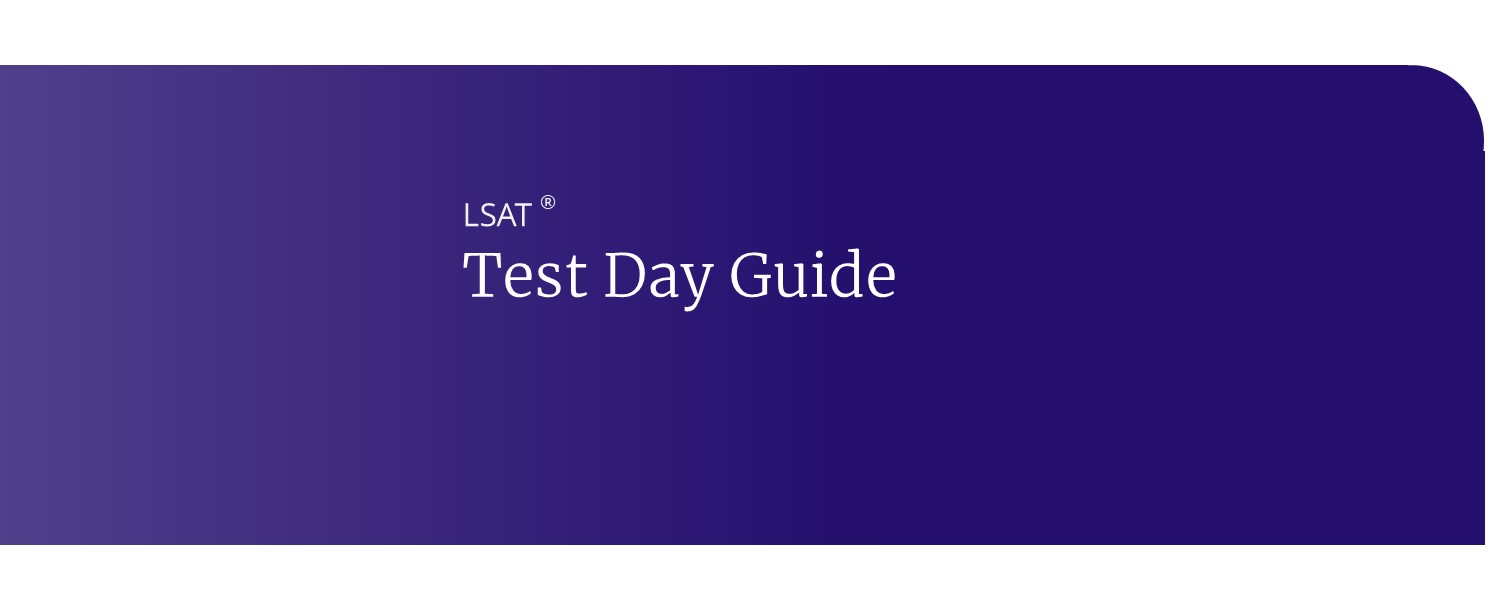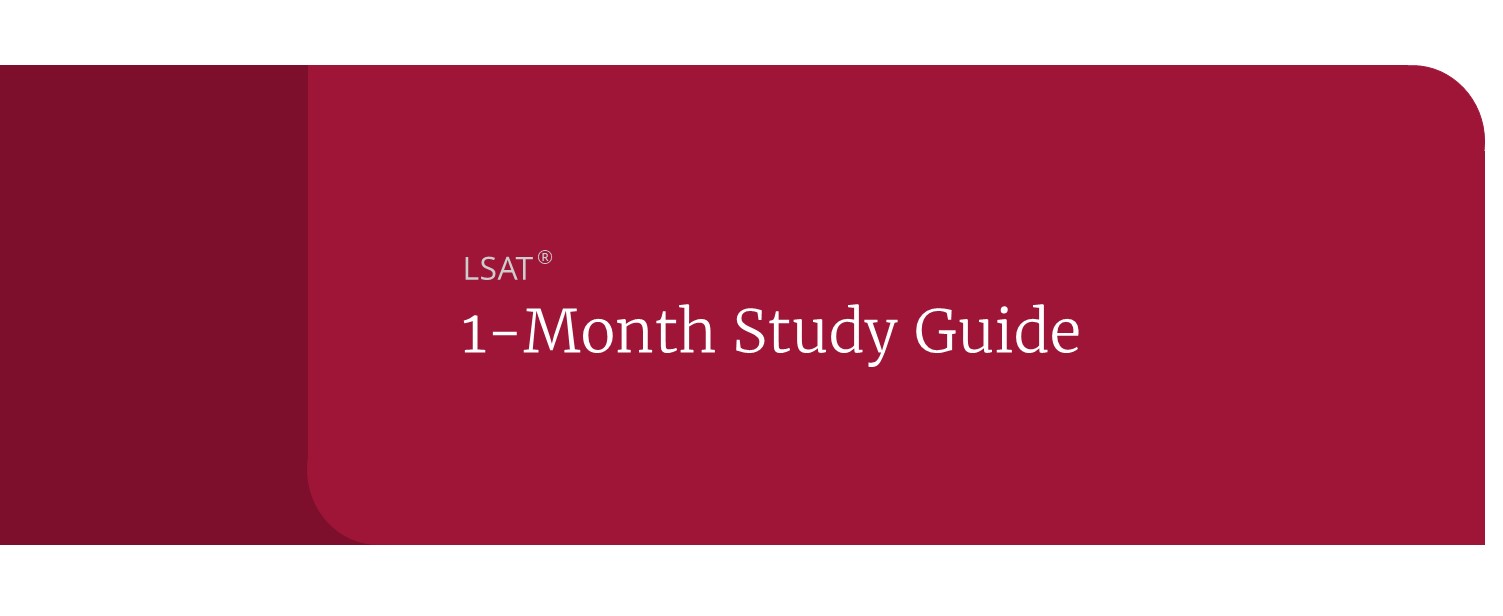Take the LSAT: Your Test Day
LSAT test day is approaching and it’s time to get prepared. These tips will help you avoid distractions, limit stress, eat right and ultimately avoid common test day mistakes that could waste your time and hurt your score.
[ LSAT PRACTICE QUESTIONS: Free LSAT 20-Minute Workout ]
1. Get a good night’s sleep—or don’t.
Sleep is highly underrated in the modern world, especially among college students and people in fast-paced professions. But sleep and rest in general play a crucial role in learning and performing well on tests. That’s why we recommend getting plenty of rest during the week before the test and on the day before LSAT test day.
But let’s be realistic—a lot of people find it hard to sleep on the night before the LSAT. And plenty of those people still do well on the test. You should definitely make every effort to get a good night’s sleep—staying up until 2 am to take another practice test is a poor choice. But if your body doesn’t cooperate with your commitment to sleep, it’s okay. The extra adrenaline pumping during the test will help you stay focused and alert.
2. Stick to your normal routine
Drastic changes to your routine aren’t helpful on LSAT test day. If you don’t normally drink coffee, but a friend tells you to drink some before the LSAT because the caffeine will help you focus, think twice before following that advice. LSAT test day isn’t a good time to experiment with your body and brain chemistry.
Dinner the Night Before the LSAT
In preparation for bed, make sure to eat a healthy dinner at least two to three hours before you go to sleep so that you have time to digest. Fill your plate with an omega-3 fatty fish (salmon, tuna, halibut) or a lean meat (chicken, turkey, lean beef), a side of nutrient-dense veggies (spinach, broccoli, kale, bok choy), and a small helping of healthy carbohydrates (whole-grain bread, brown rice, sweet potatoes). Skip the soda or sugary juice tonight and be sure to drink plenty of water.
Breakfast The Morning Of the LSAT
The best way to prepare for the LSAT in the final hours before it begins is to have a hearty breakfast that will stick with you for the duration of the exam. The best options are meals that combine protein (for mental performance) and complex carbohydrates (for energy) and that are void of too much fat (which will make you tired and sluggish). If you drink coffee, just don’t drink so much that you’ll find yourself constantly in need of the bathroom.
3. Keep your plans for LSAT test day simple.
Don’t be tempted to make plans for after the test. Taking the LSAT should be your main focus on the day of the test. It should be the only thing that you need to do that day. You don’t need the distraction of wondering whether you’ll be late for the plans that you have afterward.
4. Do some warm-up questions before taking the LSAT
A set of warm-up questions will wake your brain up and shift your mind into LSAT mode. This can help you get off to a better start in the first section. You don’t want the first question you see on LSAT test day to be the first question of the actual test. Here’s a possible warm-up routine:
- Complete 5-10 Logical Reasoning questions that you’ve completed in the past.
- Reread a Reading Comprehension passage that you’ve read before, and complete some or all of the questions.
There are some things to notice about these warm-up exercises:
- They all utilize questions that you’ve already completed before. Don’t try to tackle anything new on LSAT test day.
- This isn’t a lengthy practice session. This might only take 15 minutes or so, depending on how many questions you choose.
You can adjust the number of questions if you prefer a longer warm-up. Different people’s brains work differently, so do what works best for you. But in general, a short warm-up exercise consisting of familiar questions is sufficient.
[ WARM-UP QUESTIONS: Free LSAT Pop Quiz ]
5. Think like a champion
You want to perform like a champion on LSAT test day, so think like one. Focus on specific goals that you want to achieve. Think about the methods and approaches you’ve practiced—the ones that work well for you. If you find yourself worrying or feeling nervous, shift your thinking back to those positive thoughts. Imagine yourself answering questions smoothly and flawlessly.
6. Stick to your plan
While it can help to visualize a flawless performance, you also have to be realistic when considering how the actual test will play out.
“In reality, top scorers on the exam make many, many mistakes as they work through a test. What separates them is that they stay flexible and recognize signs that they’ve made mistakes, and then they quickly identify and correct them.” – Matt Shinners, LSAT Prep Instructor
Something that also sets top scorers apart is the ability to stick to their plan when things go wrong. Instead of abandoning their plans and trying approaches they haven’t practiced, top scorers fall back on the methods and strategies that they’ve practiced multiple times.
This applies during the test itself, but also to the LSAT test day in general. It can be tempting to spend the morning of the test scouring online forums for last-minute LSAT tips. But even if you find a juicy new approach to the Reading Comprehension section or to Logical Reasoning assumption questions, when you’re actually taking the test, it’s unlikely that you’ll successfully apply a new technique that you haven’t practiced.
7. Use the break to your advantage
You’ll get a 10-minute break at the end of the second section. Get up, walk around, and use the restroom. Do some jumping jacks or sun salutations. At that point, you’ll have been sitting in one place for a couple of hours, so it’s time to get the blood moving. Also, be sure to have a snack to eat during the break.
Snack Time During The Break
The 10-minute break period between sections 2 and 3 is extremely important to use to your advantage. Eat some brain food and drink some water to replenish your energy and hydrate your body. Eat a snack that can be consumed in a few bites and avoid “quick fix” energy drinks.
8. Avoid other LSAT test-takers
Getting into a conversation with someone who’s giving off a lot of nervous energy isn’t going to help you stay focused on test day. And you don’t want to end up talking with someone who wants to discuss test questions or other details of the test. This could be construed as violating the rule against giving or receiving assistance. Keep to yourself and focus on your personal game plan.
9. Prepare your LSAT testing space
Getting your testing space ready to take the LSAT exam can keep you calm and feel assured that you are ready. Your testing space should be a quiet, well-lit, and private work area where you can complete the test without interruption. A hard work surface is required. It is very important to have a strong and stable internet connection in order to have a successful remote testing experience. Ensure that your workspace is clean and clear of all prohibited items.
Checklist of to-dos for Remote Testing
Test your equipment
You’ll need a laptop or desktop computer, webcam and mic, stable internet, and either Chrome or Firefox browser.
Inform others
Inform others around you (your roommates, family, etc.) of your test date and time to make sure your testing environment will be quiet and undisturbed.
Remove Prohibited Items From Your Testing Space
There are many items that are not allowed in your testing room when taking the LSAT such as more than one cell phone, timers, calculators, and headphones.
Have LSAC Contact Infomation Available
If you’re concerned that you don’t have either an appropriate testing space or adequate equipment, contact LSAC for assistance. LSAC has made clear that it is committed to reducing barriers for all students looking to apply to law school.
What To Expect During Your LSAT Test
If you encounter any problems during the startup process, in your Prometic account you can select the “Blue Owl” button to request help or ask your proctor to assist you.
- A few minutes prior to your scheduled test time, log in to Prometic (LSAC will provide instructions for making an account), and click “Start Session.” (By the way, if you log in too early—more than 10-15 minutes before your scheduled session—you won’t see the “Start Session” button yet.)
- Follow the setup process—there’s a tech check, photo ID verification, and installation of a test recovery app.
- The proctor will direct you to LSAC’s LawHub, where you will log in using your LSAC username and password and launch your LSAT test.
- The proctor will have you read the rules out loud and check a box to indicate your agreement.
- At this point, the proctor enters a password that activates a start button on your screen; click that, and your LSAT test begins.
What To Expect After Your LSAT Test
You did it. You took the LSAT. You’ve just taken another step on your path to law school and becoming a lawyer—and your pride in that step is well earned. So, what happens next?
- First, take the day to appreciate what you’ve accomplished and responsibly celebrate.
- Resist the temptation to cancel your score just because you’re feeling uneasy. The LSAT is a long, grueling exam, and you’re more likely to remember a handful of frustrating questions than you are the dozens of questions you handled with ease. Sleep on it.
- Most test-takers who have taken their prep seriously will find that their official test day score is pretty close to the most recent practice tests they’ve taken under timed, test-like conditions. If you’ve been practicing with older released tests that had four scored sections and you’re wondering if the recent 3-scored section format will alter your score, you can use Kaplan’s 3-section score estimator tool to find out. Use the sum of your correct answers from the Reading Comprehension section and the two Logical Reasoning sections to estimate your score on a 3-scored section test.
- If you are a first-time test taker, and you did not register for Score Preview, you still can for a limited time after test day (and for a slightly higher price). If you’re on the fence about keeping or canceling your score, take advantage of this “insurance policy” for first-timers.
- If, after a day or so, you conclude that test day circumstances—e.g., you weren’t feeling well or something unforeseen was so distracting that you were unable to finish half a test section or more—likely resulted in a negative impact on your score, you have six calendar days to cancel your score with the LSAC. While this will show up as a canceled score on your LSAC record, you can take the test again.
- You’ll receive your official score between two or three weeks after your test day. Instead of stressing, get to work on other elements of your law school application. Gather letters of recommendation, draft your personal statement, and research the schools to which you may want to apply.



